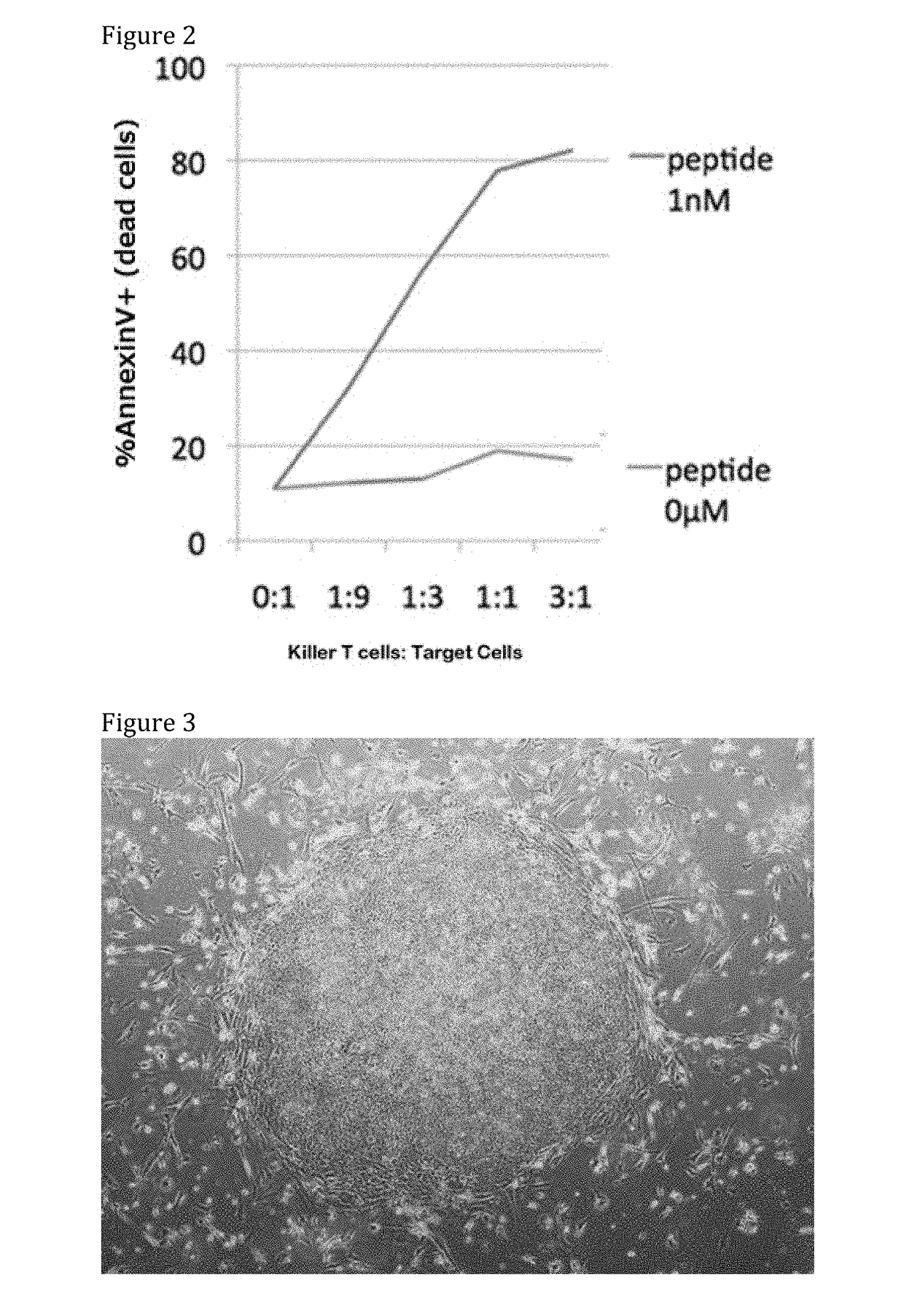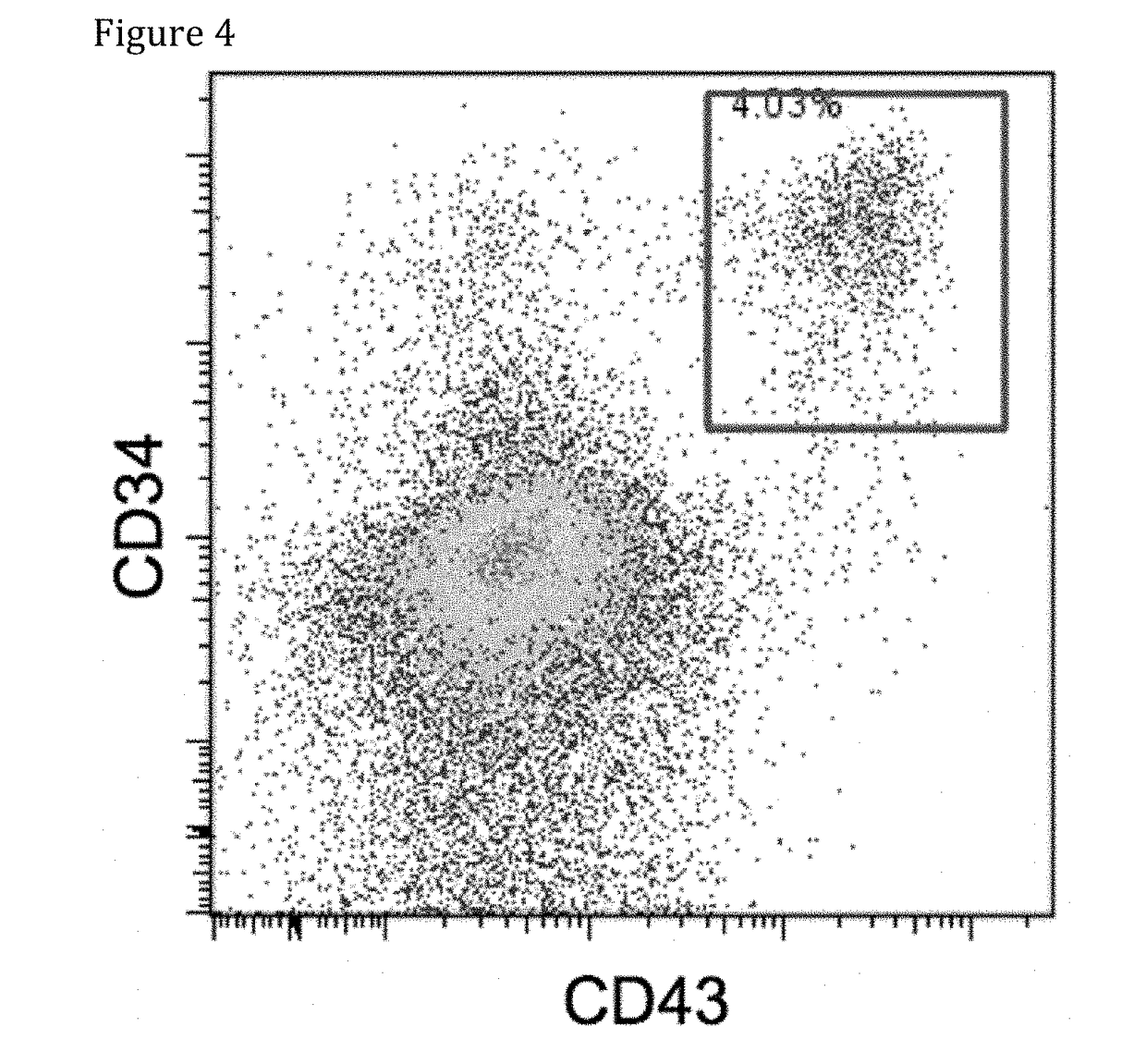Production method for pluripotent stem cells having antigen-specific t cell receptor gene
a technology of t cell receptor and production method, which is applied in the direction of antibody medical ingredients, drug compositions, immunological disorders, etc., can solve the problems of cancerous t cell introduction, difficult preparation of the cells to be transplanted, and time-consuming treatment, so as to shorten the preparation period and facilitate the verification of the quality of the cells
- Summary
- Abstract
- Description
- Claims
- Application Information
AI Technical Summary
Benefits of technology
Problems solved by technology
Method used
Image
Examples
example 1
[0089]T-iPS cells (clone LMP2#1) were established from a T cell specific for LMP2 antigen derived from peripheral blood mononuclear cells of an EB virus carrier. T-iPS cells were differentiated into LMP2 antigen specific CTLs (herein after, referred to as “re-generated LMP2-CTL#1”).
[0090]EB virus infection in acute phase may cause infectious mononucleosis and sometimes cause cancer such as barkitt lymphoma. In this example, the donor for T cells was a healthy person who had previously been infected with EB virus. Once infected, this virus stays in the lymphocytes for entire life and therefore, the donor is an EB virus carrier. The donor is, therefore, considered to have chronic EB virus infection.
1) Propagation of cytotoxic T Lymphocytes (CTL) specific for LMP2 antigen
i) The following media were used.
[0091]Medium for dendritic cells: CellGro (CellGenix)
TABLE 1Medium for T cells (T cell medium):AmountFinal conc.RPMI45 mlhuman AB serum 5 ml10%Total50 ml
ii) The LMP2 antigen peptide use...
example 3
[0168]WT1 antigen specific cytotoxic T cells were induced from peripheral blood of a healthy volunteer, and T-iPS cells (clone WT#9) were established from the CTL. Then, WT1 antigen specific mature T cells (re-generated WT1-CTL(#9)) were induced from the T-iPS cells.
[0169]This example comprises the following steps:
[0170]1) Amplification of WT1 antigen specific CTLs
[0171]2) Establish of WT1-T-iPS cells
[0172]3) Induction of CD8 single positive T cells (CTLs) from the WT1-T-iPS cells.
[0173]4) Confirmation of antigen specific killer activity of the re-generated WT1-CTL obtained in step 3).
[0174]1) Amplification of WT1 antigen specific CTL
[0175]i) The medium used is as follows.
TABLE 5Medium for T cells (T cell medium):AmountFinal conc.RPMI45 mlhuman AB serum 5 ml10%Total50 ml
ii) The WT1 antigen peptide used is as follows.
[0176]WT1 modified form: CYTWNQMNL (SEQ ID NO: 2) Cancer Immunol. Immunothera. 51: 614 (2002))
[0177]Both WT1 peptide and WT1 tetramer used below were the modified form.
[...
example 4
[0228]WT1 peptide specific CTL cells were induced according to the procedure of Example 3 from the same healthy volunteer from whom PBMC were obtained in Example 3. T-iPS cells (clone WT1#3-3) were established from the CTL and then, the T-iPS cells were differentiated into CD8 single positive T cells (re-generated WT1-CTL#3-3). The WT1 peptide used in Example 3 was also used in this example. The antigen specific killer activity of the re-generated CTLs against the LCLs loaded with the peptide as target cells was examined.
[0229]Results are shown in FIG. 16. The re-generated WT1-CTL#3-3 showed high antigen specific killing activity against the peptide-loaded LCLs.
[0230]Cytotoxic activities of the re-generated WT1-CTL#3-3 against the leukemia cell lines THP1 and HL60 that expresses WT1 antigen were examined. In addition, whether or not anti-HLA class I antibody could block the cytotoxic activity was examined. The results are shown in FIGS. 17 and 18.
[0231]The re-generated WT1-CTLs#3-3 ...
PUM
 Login to View More
Login to View More Abstract
Description
Claims
Application Information
 Login to View More
Login to View More - R&D
- Intellectual Property
- Life Sciences
- Materials
- Tech Scout
- Unparalleled Data Quality
- Higher Quality Content
- 60% Fewer Hallucinations
Browse by: Latest US Patents, China's latest patents, Technical Efficacy Thesaurus, Application Domain, Technology Topic, Popular Technical Reports.
© 2025 PatSnap. All rights reserved.Legal|Privacy policy|Modern Slavery Act Transparency Statement|Sitemap|About US| Contact US: help@patsnap.com



